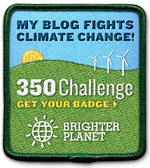 |
| Flag flying over Liberty Island, 2009 |
- - - - - - -
My
daughter, Michaela, recently encouraged our family to keep things positive and
be careful not to offend those with whom we share this great country, even if
we may not share their political preferences.
I thank her for a timely reminder, and for the hope that it represents,
coming from a twentysomething with strong political preferences of her own.
This
great United States of America came into existence thanks in no small part to
the willingness of our forefathers to compromise. They found ways to latch on to values they
shared as they struggled to reconcile their tremendous differences. Our very form of government depends on
compromise and reconciliation.
In
that spirit, I suggest that each one of us takes as much time as it takes, and
exerts as much effort as it requires, to find common ground with our fellow
Americans. Yes we have differences,
sharp and serious. But we may share much
more than we think.
Maybe
reminding ourselves of all the things we together love about the USA will help
us and our leaders figure out how to work out compromises to solve our current
and future problems. It worked in 1776
(Declaration of Independence), 1787 (Constitution), and 1791 (Bill of Rights),
and they were at least as passionate as we are, and I hope we are as smart as they
were.
I
offer below a list of items upon which to begin a search for common
ground. Consider them, change them, add
to them. Discuss them with your fellow
Americans. Talk about them with your
neighbors next door and across the street, at the gym, at the game, at work, in
letters to the editor. Search long and
hard for the things that both of you like and value, and focus your attention,
laserlike, on those things. Let those
shared values form the basis for a civil conversation that celebrates the
things we all love about our country.
- I
want my children and grandchildren (may we be so blessed), to lead happy,
healthy, and safe lives enjoying the freedoms guaranteed by our
Constitution and Bill of Rights.
- I
value a strong economy where everyone is enabled and encouraged to find or
even create a good job that gives them the chance to exercise their
talents and abilities, provide for their well-being, and contribute
productively to our common good.
- I
want our country to continue to be a model and a shining light for freedom
and liberty and tolerance and diversity.
- I
hope that the USA can continue to be a force for good around the world,
both by our example and by sharing our time, talent, and treasure.
- I
want America to continue to protect its neediest citizens even as it
provides the foundation upon which its most talented citizens build
successful lives.
- I
value a natural environment surrounding me that reflects the diversity,
productivity, and resilience found in healthy ecological systems, and that
provides at the least cost possible, breathable clean air, drinkable pure
water, and delicious healthy food.
- I
hope that all of our communities can continue to provide the structures
that support our comfortable and productive lives: fire and police
protection; good roads; abundant greenways, parks and playing fields;
power utilities; water and waste utilities; engineering and safety
standards; objective journalism outlets; and communications networks.
- I
value an educational system that provides a common, excellent learning
experience for all of us, that teaches about the things that make the USA
a beacon around the world, and that shares the best understanding we have
of history, language, science, society, and mathematics with all of our
students.
- I
want our elected and appointed leaders to respect our history, understand
this world in which we live, value our diversity, appeal to the best in
each of us, and bring us together as they improve our union.
- I
hope my children and grandchildren will, as I do, feel a lump in their
throat or a tear in their eye whenever they hear or sing The Star Spangled
Banner, America the Beautiful, and God Bless America.
 |
| Lady Liberty on a visit in June, 2009 |







